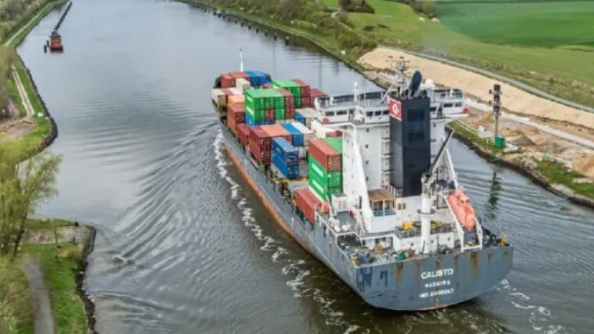According to an official announcement on March 9 by the Security Ministry of Buenos Aires Province, Argentina, the port of Bahía Blanca on the province's east coast is facing an unprecedented flood crisis, with large areas of low-lying regions still submerged in floodwaters, presenting a severe disaster situation. As of the 9th, the flood disaster triggered by extreme weather has confirmed 16 deaths, at least 1,450 residents have been forced to evacuate to temporary shelters, and 100 people are still missing. With the deepening of rescue efforts, this number is worryingly likely to continue to rise.
The disaster in Bahía Blanca began with a sudden heavy rain on March 7, where the rainfall astonishingly exceeded 300 mm in just five hours. This extreme weather event broke the historical rainfall record of the region since 1933, nearly equivalent to 70% of the city's average annual rainfall, instantly pushing the city to the brink of disaster. The floods caused by the heavy rain quickly inundated low-lying areas, not only destroying several bridges and causing collapses of multiple main roads but also severely damaging urban infrastructure, posing significant challenges to rescue operations.
Argentine President Milei announced a national three-day mourning period on the evening of March 9 to commemorate the compatriots who tragically died in the floods. Meanwhile, the Argentine National Security Ministry and the Federal Emergency Agency immediately activated the National Integrated Risk Management System, mobilizing armed forces including the Naval Prefecture, the National Gendarmerie, and the Ministry of Defense, equipped with professional rescue gear, to the disaster area for large-scale search and rescue operations, and to repair damaged infrastructure and restore basic city functions.
Economically, the Argentine Ministry of Economy quickly approved a special economic aid plan of up to 10 billion dollars for the city of Bahía Blanca, aimed at accelerating the post-disaster reconstruction process, especially prioritizing the repair of severely damaged roads, bridges, and the restoration of power supply. Currently, although rescue and reconstruction efforts are in full swing, 45% of the areas in Bahía Blanca city have not yet restored power, severely affecting residents' lives, and it will take time for the city to fully return to normal operation.
[Port Information]
Bahía Blanca is Argentina's largest wheat export port, located on the north shore of Bahía Blanca Bay, 900 kilometers from the port of Buenos Aires, adjacent to the southwest side of the Atlantic Ocean. Its main industries include textiles, meat processing, shipbuilding, oil refining, and petrochemicals.
Port facilities: The port area mainly includes the BULK & GENERAL (bulk and general cargo) terminal and the GARGO OIL QUAY (oil terminal), equipped with various shore cranes, gantry cranes, loading pipes, floating cranes, conveyors, and tugboats. Among them, the maximum lifting capacity of the shore crane is 35 tons, and the floating crane reaches 50 tons, with a 300 mm diameter oil pipeline for loading and unloading.
Warehousing: The port area has a grain storage capacity of 150,000 square meters.
Transportation: There are double-track lines along the dock for direct loading and unloading of goods. The loading and unloading efficiency is 2000 tons per hour for grain, 450 tons per hour for oil, and 150 tons per hour for coal. The dock can accommodate a maximum ship length of 230 meters, with an annual cargo handling capacity of about 20 million tons.
Import and export goods: Besides wheat, the main import and export goods include grains, petroleum products, timber, leather, and wool.

Last
Germany Strike! Kiel Canal Closed, Hamburg Port and Regional Shipping Affected
The German union Ver.di plans to launch a widespread and escalating strike in northern Germany this week, during which the Kiel Ca

Next
Airport Strike! Thousands of Flights Cancelled
On the 10th, staff at Germany's major airports initiated a massive 24-hour strike, reflecting the complex situation in the Europea




